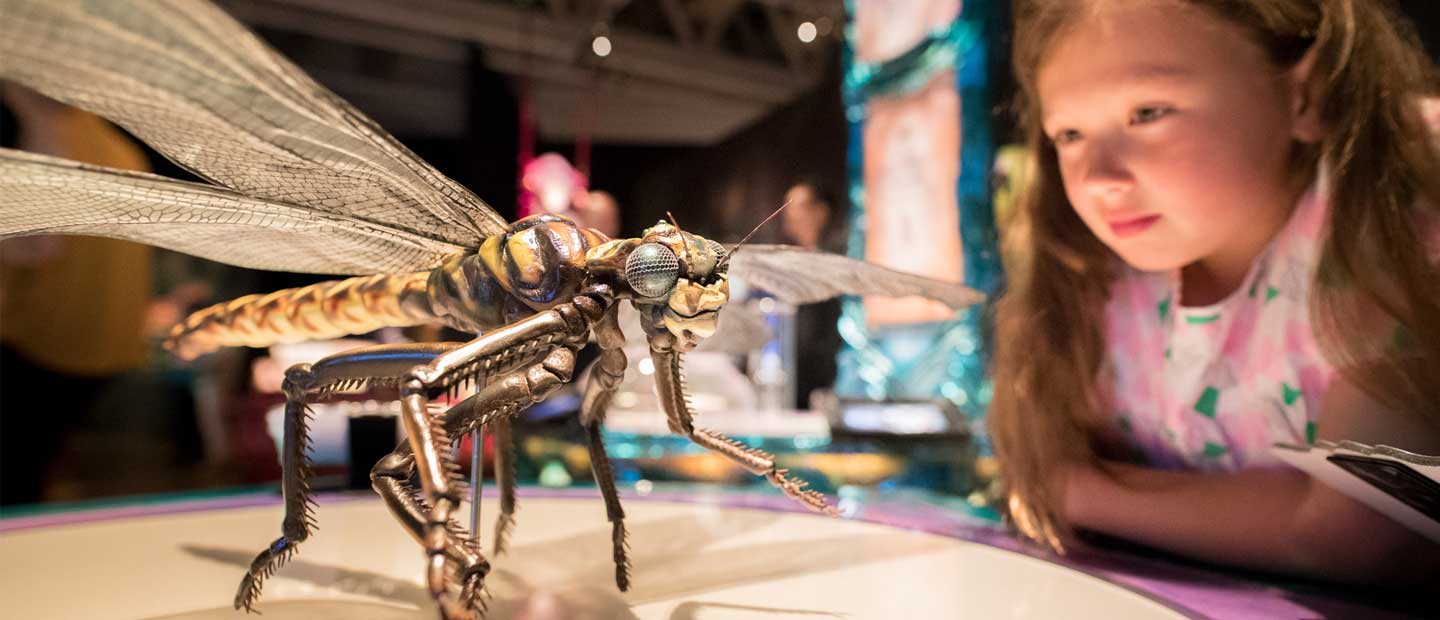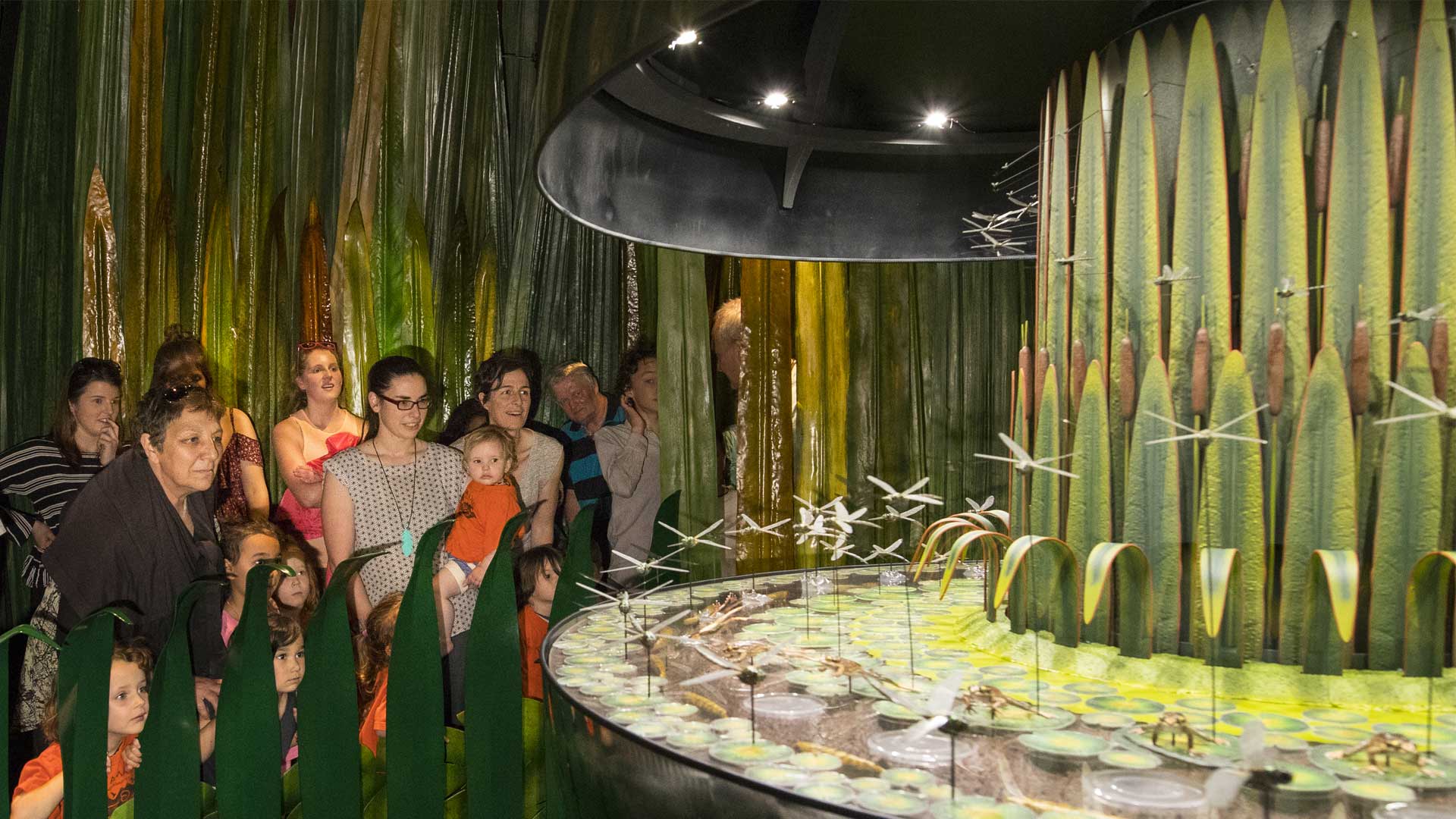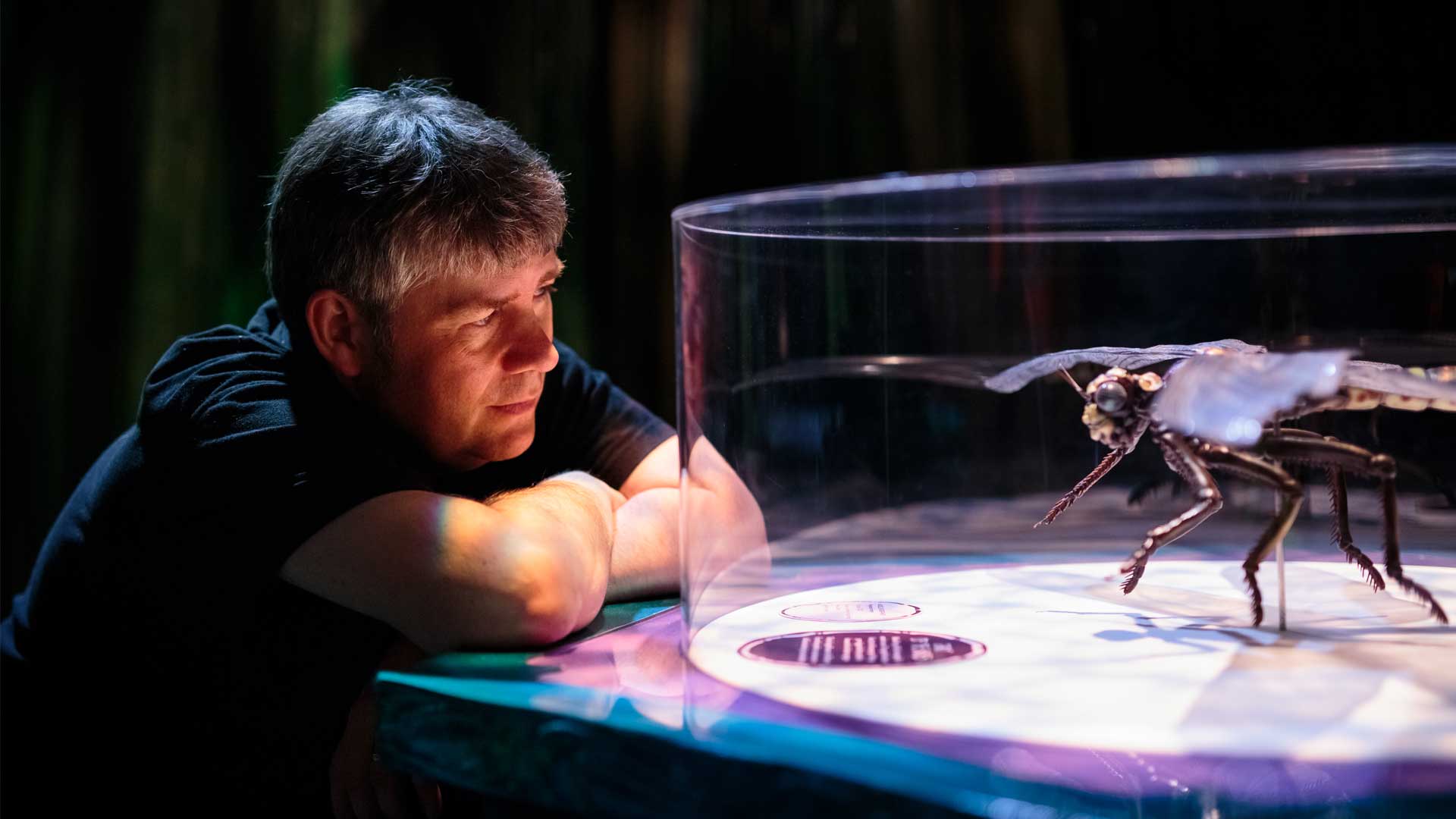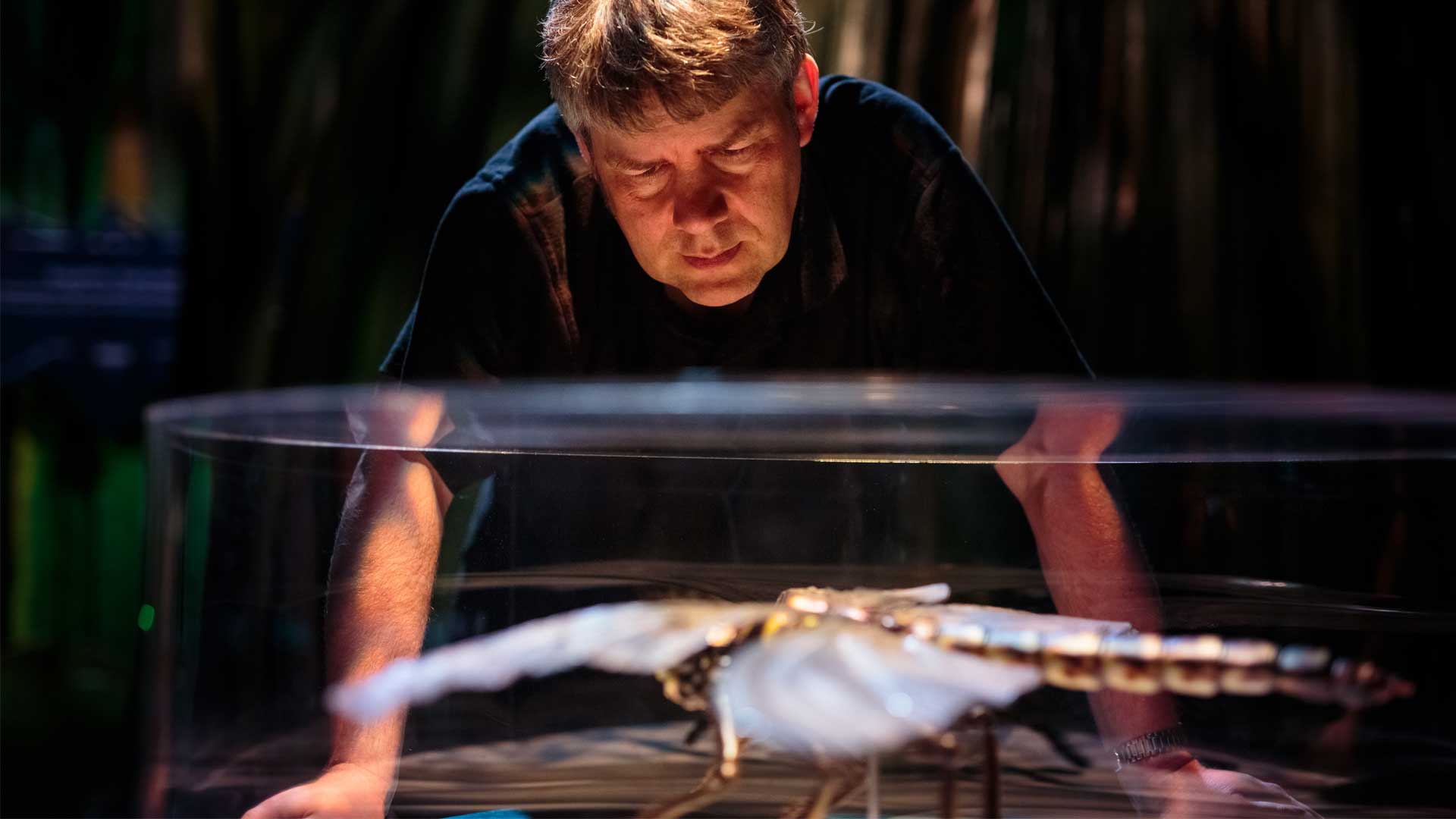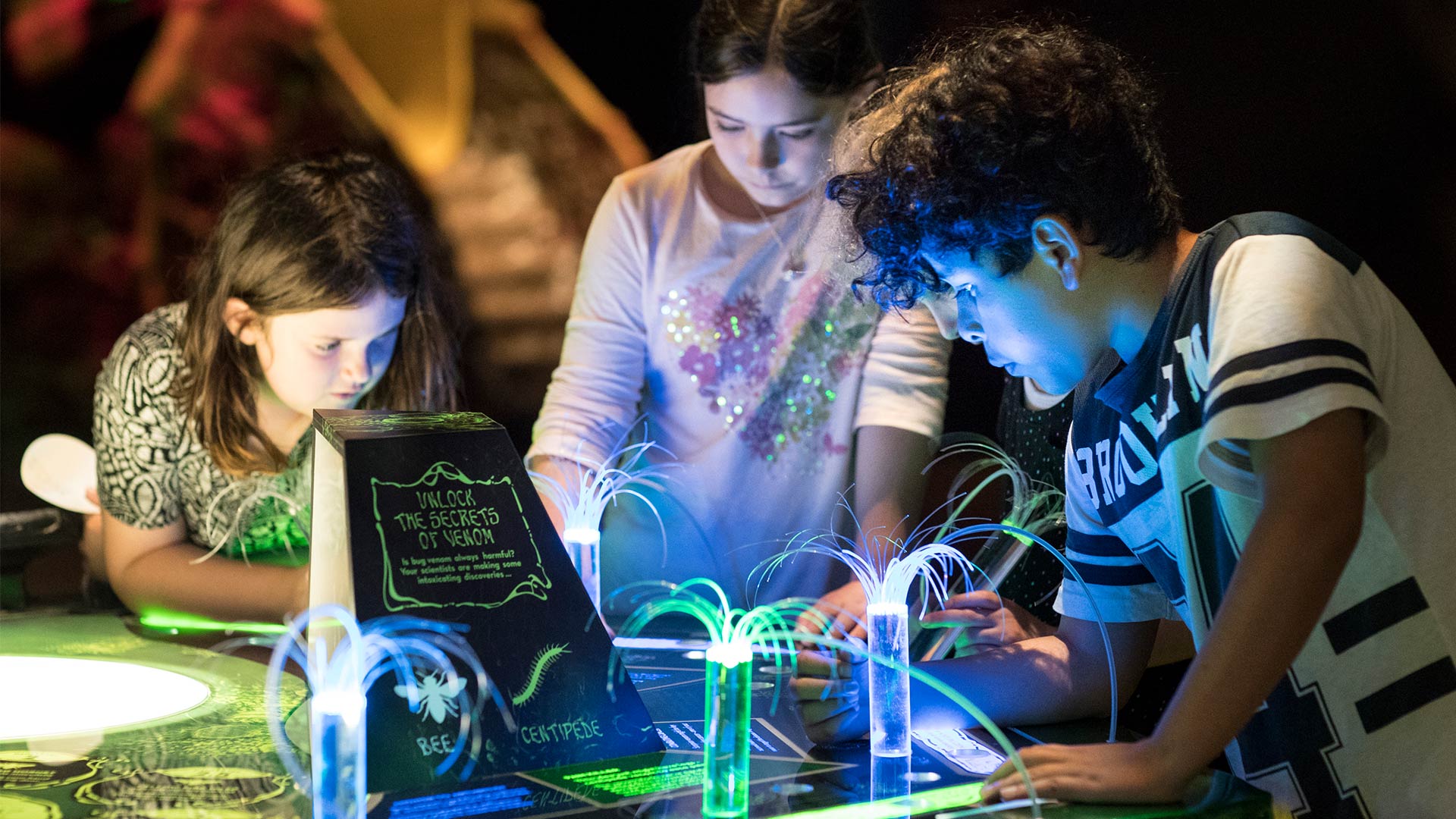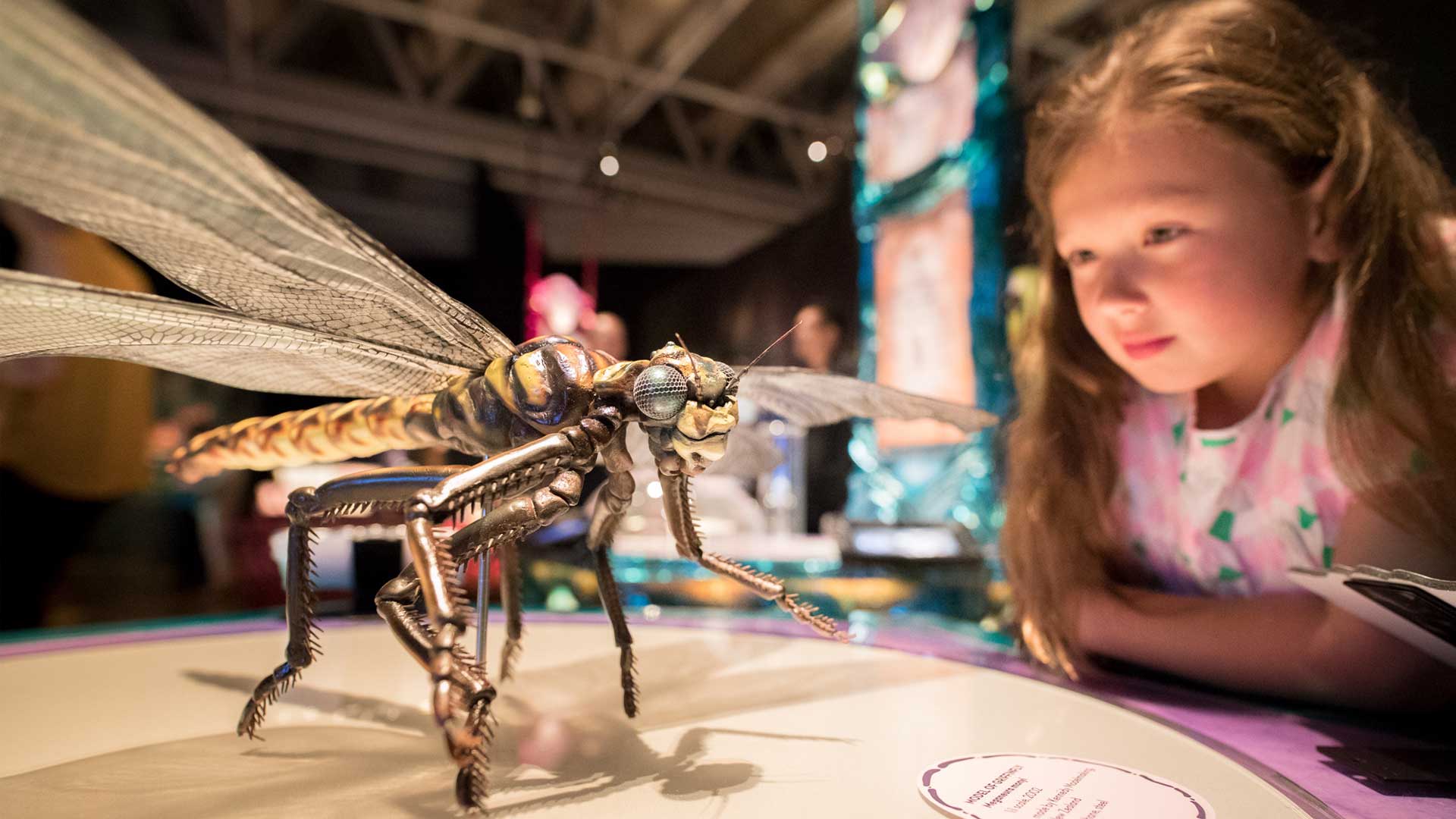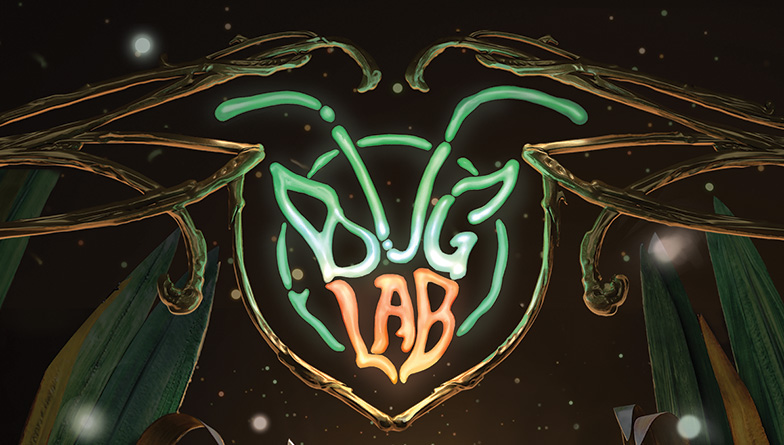The Flight section of Bug Lab features New Zealand’s own ranger dragonfly (Procordulia smithii) as the star, showing off in style in our marvellous zoetrope. Weta Workshop head Sir Richard Taylor might know the movie business inside out, but that hasn’t stopped him being a fan of this pre-film technology. I don’t want to say too much about this because I don’t want to spoil the surprise. Until you see it, you’ll just have to take my word that it’s a celebration of the dragonfly doing what it does best and is an absolute delight.
Dragonflies belong to the Odonata, an insect order that’s been around for about 325 million years. Their ancestral cousins were very much larger than modern species and some fossils show wingspans in the order of 75cm or so (check out our model!). Dragonflies are our Flight stars for two reasons. First, they’re amazing aeronauts. Our best aircraft simply can’t match them for agility. Second, they’re incredible hunters. A lion hunting alone might catch its prey around 25% of the time, but dragonflies have around a 95% success rate. The lion might be called the king of the beasts, but it’s not king of hunters.


